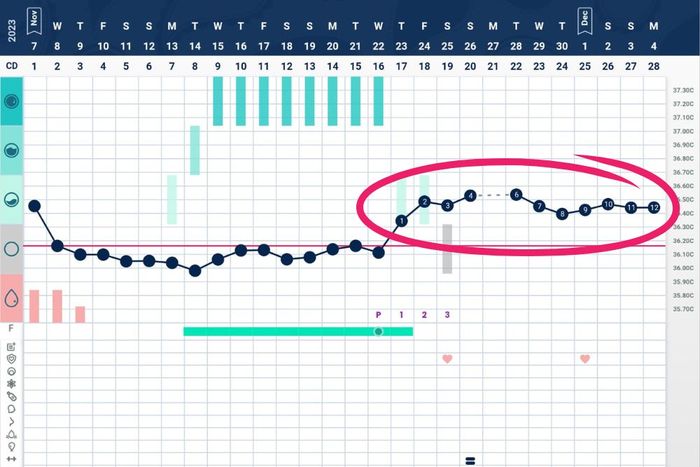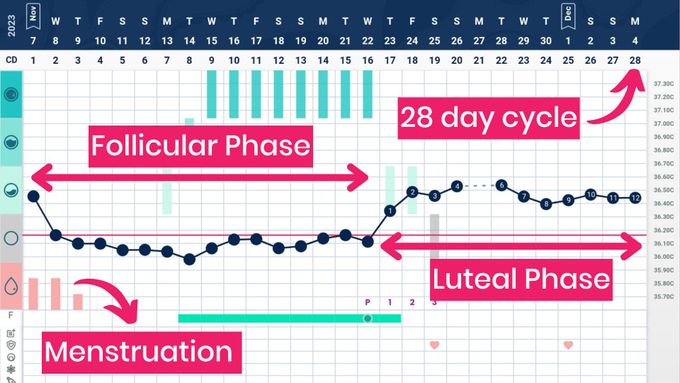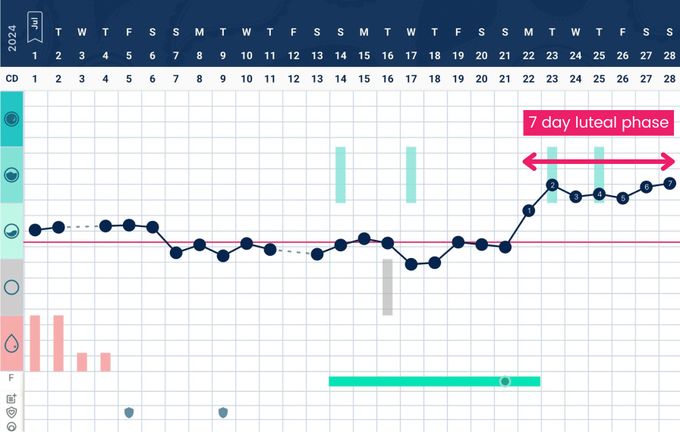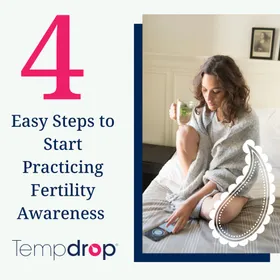What Is the Luteal Phase? Learn Now Why It’s Important and How It Affects Overall Health
Updated March 12, 2025.

The luteal phase is the part of your cycle after ovulation, and before your next menstrual period. Boom! That was easy, right?
Check out this blog about the follicular phase - the first part of the cycle.
But for those of you with a little more time, let’s take a closer look at the luteal phase and why it's important.
Terminology
First, why on earth does it have such a weird name? It’s because the term is derived from biology and medical terminology, and Latin is often used in these fields to describe body parts. The luteal phase got its name because it is largely controlled by the corpus luteum, a Latin word meaning “yellow body." This is referring to the follicle in your ovary from which the egg was released. After this follicle has been “luteinized” to trigger egg release, the empty follicle changes appearance, becoming a yellowish color. And there you have it.
Length
A normal luteal phase usually ranges from 10-17 days, with the average being 14 days. Your own luteal phase should generally not vary by more than a day or two either way in length. If your luteal phase seems to be less than 10 days and you’re having difficulty conceiving or you have had repeated miscarriages, you may want to discuss this with your physician.
Hormones
Now we have the terminology down, how is this empty follicle – the corpus luteum – responsible for the luteal phase? Starting with the ovulation event, it pumps progesterone into your body. It does this in pulses and continues for a certain time. (The corpus luteum is also producing estrogen as well, but for this article, we’ll focus on progesterone.) If you conceive and implantation occurs, the presence of the developing baby signals to the corpus luteum to continue producing progesterone, which it does throughout pregnancy. If no implantation has occurred within a certain time, that follicle winds down progesterone production and estrogen production, your levels drop, and your next menstrual period will begin.
As a side note, you may notice changes in your digestive system during the luteal phase, due to the hormones involved. It’s common to notice fewer bowel movements or harder stool later in the luteal phase, and have loose stool when those luteal phase hormones drop for your menstrual period.
Overall Health
The corpus luteum has a big job, as the luteal phase is important for reproductive health. The production of progesterone (the “pro-gestation hormone”) is vital to maintaining a pregnancy. Under the influence of progesterone, your basal body temperature rises, your cervical mucus plug is created to protect the uterus from infection, and your uterine lining – thickened by estrogen before ovulation - undergoes changes that seem to make it more hospitable to implantation. It also suppresses your immune system slightly, so your embryo isn’t a target for your immune system. Progesterone levels plateau about a week after ovulation, and strong progesterone levels have been correlated with higher rates of successful pregnancies. A strong luteal phase also means you’re more likely to have a healthier follicular (pre-ovulation) phase in your subsequent cycles.
How to Identify the Luteal Phase
Now that you know why the luteal phase is important and how it affects your overall health, you may be wondering how to identify it. Well, once you learn to identify ovulation, you will know when your luteal phase is!
You can identify ovulation through any form of fertility charting or fertility awareness method. Find the method you'd like to learn if you don't already have one and start charting!






